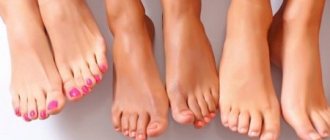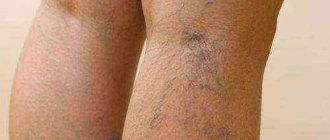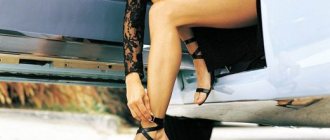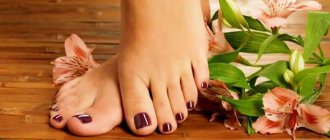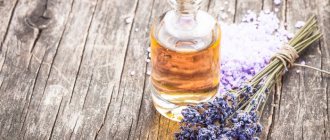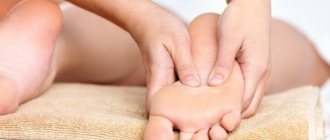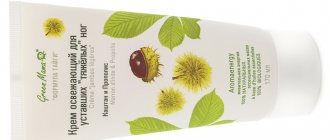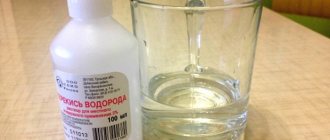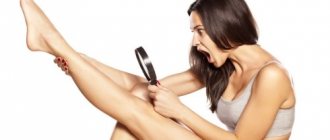Tablets for blue veins on legs
Some people believe that the appearance of blue veins on the legs is not a reason for distress. This fact should not be ignored. These are the first symptoms that cause some dangerous and unpleasant diseases.
But this is far from true. In fact, it is a symptom of many dangerous diseases. If you encounter this, you need to consult a doctor. The sooner you do something, the fewer problems there will be in the future.
The beginning is laid at the moment when a network of capillaries appears in the area of the thighs and legs. This is the first sign of varicose veins.
Read our article on a similar topic about venous networks in the legs.
Causes of varicose veins
The blood rushing to the legs must rise again, overcoming the force of gravity. The valves in the veins help ensure this effect. Thanks to them, blood flows only in one direction. When the heart pushes, it moves through the vessels, heading upward. Between small pauses caused by heart contractions, its reverse movement becomes impossible due to the venous valves.
However, valve closure may be difficult due to dilated veins. As a result, a gap appears between the valve and the vascular wall, which leads to impaired blood circulation.
Blue veins in the legs can appear for various reasons. But most often their occurrence is due to genetic predisposition.
The following factors can provoke the development of varicose veins:
Also, the venous walls undergo serious changes due to hormonal imbalance, which can be caused by pregnancy, the use of oral contraceptives, and certain gynecological diseases.
Causes of blue veins on the legs
Diseases don’t just happen, as we know. There are many reasons for this.
The most common include:
- Heredity that parents give to their children;
- Features of nature, female predisposition;
- Pregnancy period;
- Childbirth;
- Lots of physical activity;
- Heaviness;
- Constantly being on your feet;
- Overweight;
- Hormonal drugs.
As a rule, women are most susceptible to varicose veins. Women, due to their natural characteristics, are most at risk of the disease.
This does not mean that this problem bypasses men. The most common causes in men are the burdens that men carry on themselves.
Varicose veins can subsequently lead to serious consequences. In addition to varicose veins, venous insufficiency may occur.
Varicose veins include syndromes that manifest themselves externally. That is, nodes, stars and veins are an indicator of varicose veins.
What it looks like and additional symptoms

Sometimes the patient may not even notice that a venous network has appeared on the lower extremities. Protruding leg veins often go unnoticed in men. Women are able to detect the problem in the early stages. When deviated, small stripes of crimson or purple color are noticeable, which are visible under the skin. They can create different patterns, but most often they resemble a cobweb or an asterisk. In the early stages, the venous mesh does not cause any discomfort other than cosmetic. As varicose veins progress, the clinical picture soon becomes filled with the following symptoms:
- feeling of heaviness in the legs;
- pain in the lower extremities that goes away after a long rest;
- fast fatiguability;
- constant fatigue;
- swelling of the calf muscle;
- feeling of fullness.
Methods for preventing varicose veins
Only in combination can you achieve relief from pain and symptoms of varicose veins. For preventive purposes, you need to use several different means.
- Normalize your weight. Your weight is a very important component. The more weight, the more stress is placed on the legs and lower body. The blood vessels cannot cope with their work if you are overweight, which ultimately leads to an aggravation of the situation. Normalize your weight and stick to your weight mark. If the extra pounds still won’t leave you, then you need to create a diet. If there is an urgent need, you can choose a diet and stick to it for a period of time until your weight returns to normal.
- Diet. In order to avoid failures and drastic changes in weight, it is necessary to follow a diet. For better blood circulation and strengthening the walls of blood vessels, it is necessary to include foods such as nuts, apples and berries in your diet. These products will have a beneficial effect on your health, and your legs will thank you. It is worth limiting, or even completely eliminating, sweets, starchy foods, and carbonated drinks from your diet.
- Exercise stress. As you yourself have already understood, physical activity can become an enemy for your legs. Therefore, in order for physical exercise to provide exceptional assistance in varicose veins, you need to perform a number of physical exercises. Incorporate a swimming pool into your schedule. For varicose veins this is one of the best remedies. At the same time, when visiting the pool, there is no need to “prepare for the Olympic Games.” On the contrary, treat yourself to a light swim for your own pleasure. This will help relieve tension not only in your legs, but also relax in general. Skiing in winter is also very beneficial.
- Shoes. No matter how strange it may be, a lot also depends on shoes. If you have varicose veins, then it is better to limit the wearing of heels, but if there is still some need for this, then choose a wide and stable heel no more than four centimeters.
- Compression underwear. For preventive purposes, you can also use underwear. Such underwear consists of elastic knee socks or tights.
- Cosmetical tools. For prevention, you can use creams and ointments. As a rule, the components that make up these ointments help strengthen the walls of blood vessels and maintain elasticity.
- Hygiene. Hygiene is important. In order for the knives to always be in order, it is necessary not only to wash them regularly before going to bed, but also to take cool baths after a hard day of work. Change your socks and take care of your shoes often.
Causes of spots on legs
Varicose veins can manifest with various symptoms.
One of the symptoms is the appearance of red and blue spots on the lower extremities. This is considered an immediate signal to urgently consult a doctor, since venous spots on the lower extremities pose a huge threat to your health.
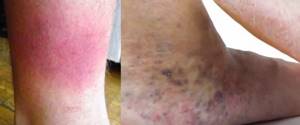
What do red spots on the legs with varicose veins mean?
Spots are a conventional name. Typically, varicose veins appear in the form of so-called stars, mesh or nodules. Visually, it all looks like a red or dark brown spot on the leg. The color of the spots may vary. Basically, this manifestation is considered as a primary symptom and the beginning of the development of the disease. The reasons for the appearance are different, they include:
- constant physical activity on the legs;
- obesity;
- professions that involve staying in one position for a long time;
- professional sports (strength sport);
- pregnancy (sudden weight gain);
- side effect after taking medications;
- injuries;
- hormonal disbalance;
- existing infectious diseases;
- chronic diseases (such as heart muscle disease).
Partner advertising
Drug treatment
For varicose veins, not only ointments and gels are used, but also tablets. For those for whom gels and ointments are contraindicated, tablets are ideal in the fight against the disease. In addition, tablets can be taken together with gels and ointments, in combination.
Varicose veins of the lower extremities are treated with medications, such as:
- Phlebotonics. This drug helps to tone the veins, which is important for varicose veins;
- Analgesics against inflammation, non-steroidal;
- Aspirin and drugs that contain aspirin directly;
- Hormonal-based products .
Before treatment, consultation with a doctor is necessary.
What happens if red veins on the legs are not treated?
Without treatment, small purple veins in the legs and red spider veins lead to an increased chance of developing thrombophlebitis, thrombosis, trophic ulcers, etc. in the future. Unfortunately, phlebologists and angiologists very often encounter such cases.
Refusal of treatment at this stage of development is associated with a lack of understanding of the danger and seriousness of the disease. Many people think that red veins on the legs are just a small flaw in appearance. But in fact, this is the first stage in the development of such a formidable disease as varicose veins of the lower extremities.
If you discover that red veins have appeared on your legs, then immediately contact a specialist in the field of vein diseases - a phlebologist. This will allow you to forget about the problem and its possible complications in the shortest possible period of time.
Treatment with traditional methods
Treatment with green tomatoes. The recipe is very simple and does not require much time. You just need green, unripe tomatoes that need to be tied to the veins. It is necessary to tie tomatoes in the morning, and in the evening you can remove a kind of compress.
Datura seeds. For this type of treatment you will need dope seeds. What to do with them? It is necessary to make a tincture from these seeds.
In order to prepare the tincture, you need to collect the seeds, chop them and add vodka. Place the tincture in a dark place where light is not exposed and wait two weeks.
Laser removal
Modern phlebology (this is the name of the branch of medicine responsible for the development of methods for diagnosing, treating and preventing vein diseases) has many methods that will help get rid of this defect once and for all. The most popular is the removal of spider veins using a laser, when a special beam treats those areas of the skin where dilated capillaries are visible. Thermal energy is released inside the vessels, they “stick together”, so that blood stops flowing into them. Thus, there are no scars or scars left. The procedure is almost painless and does not require anesthesia - the maximum that the patient will feel is a slight tingling sensation.
Surgery
Surgery is the last stage in which surgery is performed and the veins are removed. The operation can be performed either mechanically or using a laser. The recovery period varies significantly. In a similar article we talk about the postoperative period of leg vein surgery.
In both cases, a compression stocking must be worn after surgery. As a rule, many people prefer laser surgery. This has its advantages - it is easily tolerated and, as mentioned earlier, a faster and less painful rehabilitation period.
In private clinics, the cost of the operation already includes underwear, which must be worn for recovery after the intervention. In both cases, the operation takes place under general anesthesia. Doctors advise patients to choose local anesthesia to avoid heart complications.
After the lower part of the body is numbed, the surgeon cuts the problem area and pulls out the vein. Thus, the veins that caused a lot of inconvenience will be glued together and removed forever.
How to treat blue and purple thin veins
Blue and red, thick and thin blood vessels on the legs become increasingly common over time on the legs and feet. The female half of humanity is mainly concerned about this problem. Some people try to ignore it, disguise it, while others are worried about this problem to a great extent. Vessels are tubular organs through which blood or lymph moves. Due to various circumstances, thin blue and purple veins begin to appear on the surface of the skin; their thickness is insignificant, but such manifestations seriously spoil the appearance of any attractive legs. The appearance of thin blue veins on the legs indicates problems in the body. Such manifestations do not cause any discomfort and it is difficult to call it a disease, however, according to the international classification, this phenomenon is defined as a chronic venous disease.
Prevention
In order not to be at risk, you should follow preventive measures that do not require large amounts of money, a significant amount of time or special skills.
These include the following rules:
- Avoid wearing uncomfortable or tight shoes, especially high heels.
- It is necessary to exclude clothes that are tight in the waist and legs.
- Swimming in the pool and walking a lot, especially barefoot.
- Take a contrast shower and walk on your toes.
You need to try to lead a healthy lifestyle and exercise. But heavy loads should be avoided, especially on the legs. At the first opportunity, you need to give your legs an elevated position. After the end of the working day, this rule is mandatory.
The appearance of blue veins on the legs does not make anyone look good: neither a woman nor a man. Most often, this symptom clearly indicates the presence of varicose veins. And it is very difficult to get rid of it. You can only reduce the manifestations and prevent further development of the disease. To do this, it is enough to contact a specialist, strictly follow his recommendations and engage in the prevention of varicose veins. This will allow you to provide adequate resistance to the disease and give health to your feet.
Causes of blue and purple veins on legs and feet
There is an opinion that if thin veins become visible on the skin, then the thick internal veins also become dilated or affected. Such speculation is absolutely unfounded, since the reasons are completely different, although it may be a consequence of prolonged dilatation of the deep veins of the extremities.
The appearance of thin veins or spider veins is a failure of the normal functioning of the body's capillary system. This occurs as a result of exposure to external factors on the capillaries. The capillaries begin to dilate or swell, becoming noticeable on the skin of the legs. Due to the fact that women have an order of magnitude thinner skin than men, they are more susceptible to this manifestation.
Do not be mistaken that this is some kind of cosmetic defect. It is worth understanding that such a manifestation is a consequence of the occurrence of abnormal pressure in a certain area of the capillary system. Heaviness and constant fatigue, as well as various spasms and convulsions are harbingers of the manifestation of the disease.
The manifestation of the disease can be different, so at the first signs you should consult a doctor - phlebologist.
Causes of spider veins and thin blue veins on the legs:
- Excess weight and its consequences.
- Hereditary predisposition (weak connective tissues).
- Various gynecological diseases, including sluggish ones.
- Diseases and disorders of the heart, liver, and circulatory system of the body.
- Smoking and alcohol.
- Deep dermal injuries and peeling.
- Solarium abuse.
- Leg fatigue.
- Various venous diseases.
- Age-related changes and, as a consequence, loss of elasticity and vascular tone.
Blue veins on the legs: causes, treatment, how to remove?
Blue veins in the legs are a common complaint made by people with varicose veins of the lower extremities. These blood vessels are always blue in color. Veins cannot be red, yellow or green. People complain about blue veins on the legs only when they become too noticeable and create a cosmetic defect. This happens when they expand significantly.
Causes of blue veins on legs
The exact reasons for the appearance of blue veins on the legs have not been established. The only known predisposing factors are:
- female;
- pregnancy and childbirth;
- age – the older the person, the higher the risk of varicose veins;
- bad habits;
- standing profession;
- obesity.
Some causative factors can be influenced by preventing the appearance of blue veins on the legs. You can quit smoking, reduce alcohol consumption, normalize body weight. It is advisable to give birth to children as early as possible so that varicose veins do not manifest themselves during pregnancy. Standing work needs to be replaced with something more active.
All these measures to prevent the formation of dilated blue veins on the legs are indicated primarily in the case when you already see or feel the first symptoms of varicose veins (swelling in the legs, bluish tortuous vessels, spider veins). Their appearance, especially at a young age, indicates that you have a predisposition to this disease. It is necessary to take measures as early as possible to prevent its progression, because it is impossible to reverse the pathological process.
Treatment of blue veins on legs
Blue veins in the legs cannot be removed using conservative methods, but by using special procedures and taking medications you can achieve:
- temporary (functional) narrowing of blood vessels, as a result of which they become less noticeable;
- slowing down further expansion of veins;
- reducing the symptoms that often accompany varicose veins of the lower extremities (swelling, pain in the legs, cramps);
- reducing the risk of blood clots and other complications of varicose veins.
Treatment options
Today, there are a variety of treatment methods that rely on conservative and invasive techniques. Invasive treatment methods:
- Ozone therapy.
- Radio wave surgery.
- Sclerotherapy.
- Laser coagulation.
- Electrocoagulation.
All methods are quite effective and are prescribed depending on the indications. This is determined by various contraindications for a particular patient.
For example, laser photocoagulation is not performed on dark or tanned skin. This procedure is very often carried out in beauty salons and no one thinks about performing an ultrasound before it. Consequently, there is no complete information about the condition of the vessels. Which can lead to the return of the disease, relapse or the appearance of scars and burns.
One of the safest and most effective methods of treating the disease is sclerotherapy. The essence of the method is that, using a thin needle, a special substance is injected into the vessel - a sclerosant, which glues together damaged areas of blood vessels and capillaries. After such a procedure, after some time there will be no traces of enlarged veins and capillaries. Compression garments should be worn throughout treatment.
These days, the problem of thin blue veins can be treated very easily in most beauty salons and salons. But still, before going there, you should seek the advice of a specialist, which will prevent complications and consequences in the future.
Methods for treating blue veins on the legs
How to remove blue veins on the legs depends on what stage the disease is at. If varicose veins are at an early stage, they can be combated with the help of special ointments and medications. An effective and popular remedy is troxevasin. If the disease progresses further, treatment is carried out by surgical intervention. The treatment method is prescribed only after studying the stage of the disease. For this, duplex or triplex scanning is used, which provides extensive information about the condition of the blood vessels.
In the case of a severe stage of the disease, the main method is surgery, which is aimed at removing the affected veins. There are several types of surgical intervention.
- Phlebectomy is an operation aimed at restoring blood flow through deep vessels. During the operation, the affected veins are removed; the procedure lasts about an hour. After phlebectomy, small scars remain (approximately 5 mm). There are also some contraindications to the procedure: cardiac ischemia, varicose veins in the later stages, old age, pregnancy, etc.
- Laser coagulation is the most modern and simple method of combating the disease. The laser energy acts on the diseased vein, sealing it. This is an outpatient procedure and takes about half an hour. Another great advantage is the fact that no cuts need to be made. After laser coagulation, the fused vein remains in its place, but blood no longer circulates through it. The patient forgets about the illness the very next day. The procedure is contraindicated for atherosclerosis of the legs, obesity of the extremities, as well as for patients with endarteritis.
- Scleropathy is a widely used method that has been used for more than a century. It is carried out strictly under ultrasound control, is easily tolerated by patients, has no side effects, and the effect remains throughout life. The procedure involves injecting an adhesive substance into the diseased vein. The vein no longer functions, blood does not flow through it, therefore, pain no longer occurs. The person returns to a full life.
Folk remedies
When treating a disease, you should not neglect folk remedies, but it is worth mentioning that this approach must be carried out in combination with taking vitamin cocktails and using ointments and medications.
- Apple vinegar. The product is prepared by squeezing the juice from late sweet apples. Freshly squeezed juice must be poured into a wooden container; if one is not available, glass or enamel will do. The dishes should have a wide top, on which gauze should be secured to prevent contamination. The dishes should be left in a warm place; if the weather permits, they can be placed directly in the yard or on the balcony. The liquid must be tasted periodically to determine whether the required acidity has been obtained. After preparation, homemade apple cider vinegar should be bottled and stored in a cool, dark place. Applications of apple cider vinegar in treatment: the affected areas must be thoroughly lubricated several times a day for a month. It should be noted that homemade apple cider vinegar is quite an effective remedy for treating the disease. For prevention, it is necessary to lubricate problem areas once at night.
- Pine baths. In second place in terms of treatment effectiveness are pine baths. To prepare the bath you will need two glasses of pine needles, boiling water and chamomile infusion. Method of preparation: pour boiling water over the pine needles and leave over low heat for 10 minutes. Then add warm water and chamomile infusion. You need to keep your feet in this bath for about half an hour.
Treatment of spider veins on the legs
How to remove small vessels on the legs? What to do if “microvaricose veins” appear? There are many folk recipes for combating TEA and RV. Traditional medicine offers a wide arsenal of external helium, tableted venotonics, as well as sclerotherapy, laser ablation or microphlebectomy. Traditional medicine also comes to the rescue
External products
They are grandmother's recipes. However, they can reduce the manifestations of the disease and alleviate the condition. This is what traditional medicine offers:
- Apple cider vinegar (preferably homemade). Apply liberally to a cotton swab, after which the areas of skin involved in the process are wiped.
The procedure can be repeated 3 times a day. The first results should appear after 2 - 4 weeks. Recent studies published in 2020 showed that topical use of apple cider vinegar in patients with varicose veins increases the effectiveness of conservative treatment.
- Kalanchoe tincture. Rinse the mature leaves of the plant under running water, dry and chop. Then place (4 tablespoons) in a glass container, pour half a liter of boiling water, add one tablespoon of alcohol, and leave in a dark place for 3 weeks. Wipe parts of the body with spider veins three times a day.
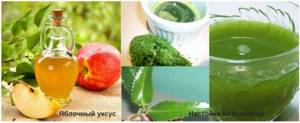
- Witch hazel (alternative names: witch hazel or witch hazel). The extract of this plant has astringent, anti-inflammatory properties, and constricts veins. Tannins and essential oils, which are the main active ingredients in witch hazel, cause the tiny saphenous veins to constrict.
A cotton ball is moistened with diluted witch hazel extract and wiped over the affected area several times a day. You can also make a compress moistened with a decoction, for which you take several leaves of the plant, pour boiling water over it and let it brew.
- Mustard oil improves blood flow to the affected area, is an effective means of combating telangiectasia, and answers the question of how to remove blood vessels on the legs. Mix a few drops of mustard oil with olive oil, after which the mixture is applied twice a day.

Internal products
Modern treatment of “undesirable” veins on the legs is not complete without the use of venotonics (phleboprotectors) - drugs that can strengthen the venous wall:
- Butcher's broom (Butcher's broom) is used as a food additive. Helps relieve congestion in the veins. It is believed that it can effectively fight spider veins. However, there have been no clinical studies to demonstrate its safety and effectiveness.
- Horse chestnut fruit extract and thiamine (vitamin B1) are included in the drug “Aescusan” and are used to treat discomfort in the area of dilated intradermal veins. There are two dosage forms: an oral solution (10-15 drops 3 times a day) and a tablet form (usually taken after meals, 1 tablet 3 times a day).
- The deprotenized hemoderivative of the blood of young calves is included in Actovegin (Solcoseryl). The drug is an excellent phleboprotector and has a good therapeutic effect for varicose veins of the lower extremities. Actovegin® is available in tablet form (tablets or dragees), there are also ointments and an injection solution in ampoules. 1 - 2 tablets are prescribed orally. 3 times a day before meals, duration of therapy is 4 - 6 weeks.
Be sure to consult your doctor before taking any of the medications suggested above. Make sure they are compatible with medications you are already using for other conditions.
Sclerotherapy and laser ablation
How to remove small blood vessels on the legs? Modern phlebology has a number of fairly effective methods for removing telangiectasia and reticular varicose veins. These procedures are usually performed on an outpatient basis and are virtually painless.
Treatment of spider veins is almost always for cosmetic reasons only, although sometimes they can cause a feeling of heat or pulsation, which indicates the presence of reflux. Two types of therapy are usually used:
1. Laser ablation - a beam of concentrated energy is delivered through the skin, which creates a high temperature in the lumen of the vein (as if cauterizing it), which leads to the walls sticking together, the visible vessel slowly disappears. This technique is most popular among patients, as it does not require a surgical incision or the use of needles. Laser therapy lasts on average from 15 to 20 minutes, which depends on the number of telangiectasias and the area of their distribution. Sometimes it takes several visits to the patient to get rid of all the lesions on his legs.
2. Sclerotherapy is used mainly on medium-sized and reticular veins; with this technique, a special sclerosing substance is injected:
- Foam sclerotherapy is most often used in the treatment of reticular varicose veins. Sclerosate saturated with gas (usually air) is injected into the vessel.
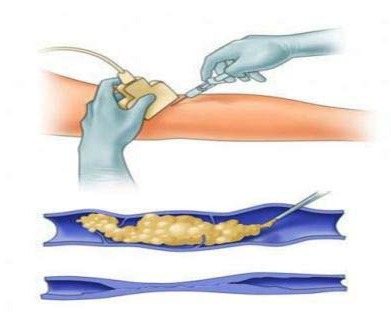
Foam sclerotherapy
- Microsclerotherapy (analogous to sclerotherapy, which is performed on the saphenous veins, only the technique is more advanced, special needles are used). Usually several spider veins and reticular veins are sclerosed at the same time. A compression bandage or stocking is applied for 1 to 2 days after the procedure. If sclerosate gets outside the vessel during injection, ulceration may occur in this area, which heals slowly, leaving a scar. Hyperpigmentation in the injection area (darkening of the skin) is also possible.
Watch the video about microsclerotherapy:
- Ultrasound-guided sclerotherapy is used to remove deeper veins.
Microphlebectomy is performed under local anesthesia. The veins are excised through a small puncture of the skin. This minimally invasive surgery is performed only for reticular varicose veins.
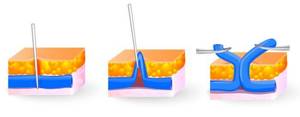
Microphlebectomy for reticular varicose veins
Most of the side effects that may occur with the above procedures are temporary and usually disappear after a short period of time. These include:
- Allergic reaction.
- Itching.
- Hyperpigmentation (darkening of areas of the skin). Such skin changes can persist for several months (rarely more than a year), after which they disappear completely.
- Bruise. Bruises appear in most patients and disappear at the same speed as regular bruises.
- Phlebitis is a localized painful inflammation of a vein that has been “treated,” usually replicated by the use of anti-inflammatory drugs and compression stockings.
- Ulcers.
- DVT (deep vein thrombophlebitis).
As a rule, a clinic that cares about its reputation is equipped with equipment that allows the patient to undergo a complete examination and choose all currently available methods for removing intradermal veins. Specialists usually offer an individual treatment plan for each client, the best one for each specific situation. If from 70 to 90% of patients are satisfied with the result of treatment after undergoing the procedure, this is considered the optimal indicator for a “decent” clinic.
Prevention of disease occurrence
Those who are susceptible or have a hereditary predisposition to vascular and venous diseases should follow a number of preventive measures:
- It is necessary to reduce the time spent in the sun, visit saunas, steam baths and solariums as little as possible, and limit the intake of hot baths.
- You should throw your legs above your head at least once a week; it is convenient to do this against a wall and spend at least 30 minutes in this position.
- Rinse your feet with cool water after a bath.
- Pays attention to physical activity.
- Avoid clothes that are too tight.
- If the work requires a sedentary position, you need to change your position as often as possible.
- Watch your diet, avoid fatty and spicy foods.
- It is necessary to play sports or go for walks as often as possible.
It is important to understand that if problems arise with blood vessels or veins, you should not self-medicate; you should immediately consult a doctor for advice.
Reasons for appearance
Why does vascular network appear on the legs? The causes (we will tell you below how to get rid of this disease) of this disease can be hidden in various factors. It should be especially noted that representatives of the fairer sex suffer from this problem three times more often than men.
According to experts, the development of varicose veins on the lower extremities is due to two factors:
- congenital (that is, due to heredity);
- acquired.
Let us list the main reasons for the acquired factor contributing to the development of the vascular network:
- endocrine diseases;
- hormonal imbalance in the body (including increased production of estrogen in women);
- excess weight (extra pounds significantly increase the load on the veins and blood vessels);
- a sedentary lifestyle, as well as prolonged loads (static) on the lower extremities without rest, which contribute to the development of congestion in the veins and poor circulation;
- gestation time;
- bad habits, including poor nutrition;
- abuse of high-heeled shoes.
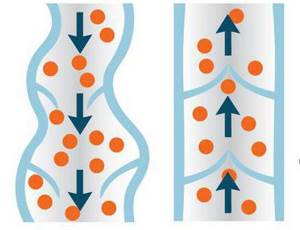
Only an experienced doctor can tell you how to get rid of spider veins on your legs. But before this, you should definitely undergo a full diagnostic examination. It is quite difficult not to notice such a problem. After all, the appearance of a venous network on the legs is necessarily accompanied by a feeling of pain and heaviness in the lower extremities.
How to treat blue and purple thin veins
Blue and red, thick and thin blood vessels on the legs become increasingly common over time on the legs and feet. The female half of humanity is mainly concerned about this problem. Some people try to ignore it, disguise it, while others are worried about this problem to a great extent. Vessels are tubular organs through which blood or lymph moves. Due to various circumstances, thin blue and purple veins begin to appear on the surface of the skin; their thickness is insignificant, but such manifestations seriously spoil the appearance of any attractive legs. The appearance of thin blue veins on the legs indicates problems in the body. Such manifestations do not cause any discomfort and it is difficult to call it a disease, however, according to the international classification, this phenomenon is defined as a chronic venous disease.
Reasons why red veins appear on the legs
The underlying reason for the appearance of visible capillary vessels can be considered heredity. It is because of a defect in the genes responsible for the elasticity of the venous wall that sometimes entire families suffer from varicose veins.
But one cannot ignore the fact that varicose veins develop in women several times more often than in men. Phlebologists agree that this is caused by a difference in endocrine characteristics. Female sex hormones have a relaxing effect on the muscle layer of the veins.
Under normal conditions this is not felt, but during pregnancy, menopause or taking external hormones, excessive relaxation occurs and, as a result, vasodilation occurs.
In addition, varicose veins in the legs develop in people with a passive lifestyle and those suffering from obesity. The reason for this is poor circulation and blood stagnation in a static position (especially sitting or standing in one place).
Causes of blue and purple veins on legs and feet
There is an opinion that if thin veins become visible on the skin, then the thick internal veins also become dilated or affected. Such speculation is absolutely unfounded, since the reasons are completely different, although it may be a consequence of prolonged dilatation of the deep veins of the extremities.
The appearance of thin veins or spider veins is a failure of the normal functioning of the body's capillary system. This occurs as a result of exposure to external factors on the capillaries. The capillaries begin to dilate or swell, becoming noticeable on the skin of the legs. Due to the fact that women have an order of magnitude thinner skin than men, they are more susceptible to this manifestation.
Do not be mistaken that this is some kind of cosmetic defect. It is worth understanding that such a manifestation is a consequence of the occurrence of abnormal pressure in a certain area of the capillary system. Heaviness and constant fatigue, as well as various spasms and convulsions are harbingers of the manifestation of the disease.
The manifestation of the disease can be different, so at the first signs you should consult a doctor - phlebologist.
Causes of spider veins and thin blue veins on the legs:
- Excess weight and its consequences.
- Hereditary predisposition (weak connective tissues).
- Various gynecological diseases, including sluggish ones.
- Diseases and disorders of the heart, liver, and circulatory system of the body.
- Smoking and alcohol.
- Deep dermal injuries and peeling.
- Solarium abuse.
- Leg fatigue.
- Various venous diseases.
- Age-related changes and, as a consequence, loss of elasticity and vascular tone.
Why does a venous network appear on the legs?
This is a fairly common problem - in your female circle there will definitely be a relative, friend, colleague who is forced to wear this unattractive “decoration”.
The medical name for spider veins or veins is telangiectasia .
These are dilated capillaries and arteries , which appear in the form of various “patterns” on the skin (by the way, not only on the legs, but also in other places, including on the face).
Normally, they are not visible, but after prolonged stress on the legs or changes in hormonal balance, they may appear.
That is, possible causes of telangiectasias include:
- pregnancy and childbirth
- diseases associated with a woman’s hormonal system, long-term use of hormonal contraceptives
- standing for long periods of time, carrying heavy objects, or excessive use of high heels
- sports that involve significant stress on the legs
Heredity also plays a role - if your female relatives have experienced varicose veins, you are also at risk, unfortunately.
If, in addition to the venous network, your legs become very swollen in the evening, that your shoes begin to pinch, if you periodically feel pain, heaviness and distension in your calves, we strongly advise you to see a phlebologist. These are signs of CVI - chronic venous insufficiency, which, if left untreated, can develop into varicose veins.
Treatment options
Today, there are a variety of treatment methods that rely on conservative and invasive techniques. Invasive treatment methods:
- Ozone therapy.
- Radio wave surgery.
- Sclerotherapy.
- Laser coagulation.
- Electrocoagulation.
All methods are quite effective and are prescribed depending on the indications. This is determined by various contraindications for a particular patient.
For example, laser photocoagulation is not performed on dark or tanned skin. This procedure is very often carried out in beauty salons and no one thinks about performing an ultrasound before it. Consequently, there is no complete information about the condition of the vessels. Which can lead to the return of the disease, relapse or the appearance of scars and burns.
One of the safest and most effective methods of treating the disease is sclerotherapy. The essence of the method is that, using a thin needle, a special substance is injected into the vessel - a sclerosant, which glues together damaged areas of blood vessels and capillaries. After such a procedure, after some time there will be no traces of enlarged veins and capillaries. Compression garments should be worn throughout treatment.
These days, the problem of thin blue veins can be treated very easily in most beauty salons and salons. But still, before going there, you should seek the advice of a specialist, which will prevent complications and consequences in the future.
What do red veins on the legs look like with varicose veins?
With reticular varicose veins, the thin saphenous veins and capillaries undergo expansion. In this case, you may notice red capillaries on the legs. They can unite with each other. In this case, bizarre shapes form on the skin of the legs: spider veins and cobwebs. Usually they do not protrude above the surface of the skin and are painless on palpation.
The favorite localization of such changes is the outer surface of the thigh, veins under the knee and on the ankle. Such transformations are often the first signs that irreversible changes are occurring in the body and the blood vessels are gradually losing their elasticity and firmness.
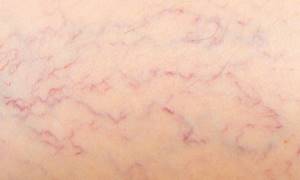
Ointments and preparations for veins and blood vessels on the legs
There are cases when invasive treatment is contraindicated or it is not possible to use the technique. Treatment can be carried out with special ointments and preparations, the action of which is aimed at strengthening the walls of blood vessels, increasing tone and improving the flow of blood and lymph. When blue and purple thin veins appear on your legs, you can try special ointments and gels.
Common ointments for the treatment of telangiectasia are Troxevasin, Lyoton gel, Venitan and many others.
- Troxevasin ointment is aimed at strengthening the walls of veins and blood vessels, which significantly helps fight the disease. Using Troxevasin, a vitamin complex, medications and some folk remedies, you can achieve significant results in the fight against the disease.
- Among the drugs, it is perhaps worth noting Phlebodia 600; this venotonic drug should be taken in an integrated approach when treating the disease. Advantages of the drug:
- The drug contains high-quality diosmin, the optimal dosage of which, unlike ointments and creams, has a beneficial effect on the walls of blood vessels and veins both externally and internally.
- The drug has a beneficial effect not only on blood vessels and veins, but also on the entire cardiovascular system.
- The drug can be taken by a wide range of patients. With restrictions, it can also be taken by pregnant women.
How are red veins on the legs treated?
In order to return their legs to their former appearance, women resort to various methods. But even good pills and the best ointment for varicose veins without sclerosing the veins cannot guarantee results. Sclerotherapy allows you to forget about what red veins on your legs are in just a few minutes.
To do this, the phlebologist injects a small amount of a safe drug into the vein. It is not absorbed into the body and acts only locally, gluing the walls of blood vessels together. In this case, phlebologists during the procedure, in order to be as traumatic as possible, use a needle of the smallest diameter. The patient does not feel anything during the process, and the result can be seen within a few days.
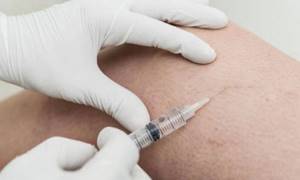
Folk remedies
When treating a disease, you should not neglect folk remedies, but it is worth mentioning that this approach must be carried out in combination with taking vitamin cocktails and using ointments and medications.
- Apple vinegar. The product is prepared by squeezing the juice from late sweet apples. Freshly squeezed juice must be poured into a wooden container; if one is not available, glass or enamel will do. The dishes should have a wide top, on which gauze should be secured to prevent contamination. The dishes should be left in a warm place; if the weather permits, they can be placed directly in the yard or on the balcony. The liquid must be tasted periodically to determine whether the required acidity has been obtained. After preparation, homemade apple cider vinegar should be bottled and stored in a cool, dark place. Applications of apple cider vinegar in treatment: the affected areas must be thoroughly lubricated several times a day for a month. It should be noted that homemade apple cider vinegar is quite an effective remedy for treating the disease. For prevention, it is necessary to lubricate problem areas once at night.
- Pine baths. In second place in terms of treatment effectiveness are pine baths. To prepare the bath you will need two glasses of pine needles, boiling water and chamomile infusion. Method of preparation: pour boiling water over the pine needles and leave over low heat for 10 minutes. Then add warm water and chamomile infusion. You need to keep your feet in this bath for about half an hour.
Treatment of varicose veins on the legs
Drug treatment
After diagnosis, clarification of the causes and severity of varicose veins, complex therapy is prescribed. It is possible to get rid of the vascular network formed on the lower extremities through medications. They should be used only as prescribed by a doctor to avoid complications. Thanks to medications, it is possible to restore normal blood circulation, eliminate pain and other unpleasant symptoms. It is possible to remove varicose veins on the legs using the drugs presented in the table:
| Drug group | Name |
| Phlebotonics that have a positive effect on vascular tone | "Detralex" |
| "Venoruton" | |
| "Troxevasin" | |
| Nonsteroidal anti-inflammatory drugs | "Indomethacin" |
| "Ibuprofen" | |
| "Diclofenac" | |
| Blood thinners | "Venolife" |
| "Trental" | |
| "Lioton" |
It is possible to use local and systemic medications for spider veins on the lower extremities. For best results, it is recommended to combine tablets with ointments.
How effective is alternative therapy?
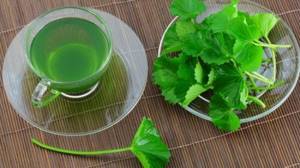
The resulting vascular network on the legs can be eliminated at home using natural ingredients. Often this therapeutic technique has a better effect than pharmaceutical drugs. You can cope with the problem with the help of these useful recipes:
- Green tomatoes. For treatment, fresh, not fully ripened vegetables are suitable, which are cut into 2 halves and applied to the area where the mesh is formed. After manipulation, a special cream against varicose veins is applied to the skin. Duration of therapy is a week.
- Agave. Juice is obtained from aloe leaves, which is used to wipe problem areas several times a day. The procedure is carried out over a month.
- Cabbage leaf. Place the component in boiling water, then wrap it in a plastic bag and place it in the refrigerator for several hours for 24 hours. Vinegar is applied to the damaged area, a cabbage leaf is applied, fixing it on the leg with a bandage. Repeat the manipulation until the varicose veins are completely eliminated.
- Apple vinegar. The affected area is treated with this liquid until the problem goes away.
- Parsley. Pour boiling water over the plant and let stand for 2 minutes. Mix with an equal amount of milk and prepare compresses.
What is diet therapy?
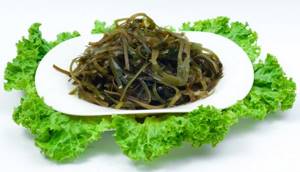
The vascular network in the leg area may not go away for a long time until a person adjusts his daily diet. With the help of a diet, it is possible to improve blood circulation, reduce weight and stress on the legs. It is important to consume plenty of vitamins and beneficial microelements. Patients with varicose veins need to limit or completely abandon the use of salt and spices. You should drink at least 1.5 liters of water per day. Foods enriched with vitamins C and B have a strengthening effect on the vascular walls. Thanks to the consumption of fresh vegetables, herbs, and cereals, it is possible to eliminate varicose veins and prevent the formation of new ones. It is recommended to include foods such as:
- seafood;
- seaweed;
- celery;
- citruses;
- red and black currants.
Radical treatment
If varicose veins do not go away after conservative therapy, then surgical intervention is prescribed. This measure is a last resort, but at the same time the most effective. Less painful are sclerotherapy and laser treatment, in which a laser beam or sclerosing substance is applied to the problem area. If such methods are ineffective, an operation is performed in 2 ways:
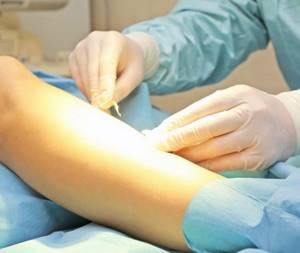
The doctor removes problematic vessels using special hooks.
- Classic phlebectomy. Surgery is performed in several ways: During a crossectomy, the surgeon makes an incision in the groin area, ligates and crosses one large saphenous vein. Often the manipulation is performed under ultrasound control.
- Stripping involves excision of the venous plexus in the ankle or thigh area. A probe is inserted into the cavity of the injured vessel, through which the vein is pulled out. This manipulation has the highest risk of injury and can cause severe pain and swelling during the rehabilitation stage.
- Ligation of the communicating veins that connect the superficial and deep vessels is a more gentle procedure, after which re-varicose veins rarely form.
Prevention of disease occurrence
Those who are susceptible or have a hereditary predisposition to vascular and venous diseases should follow a number of preventive measures:
- It is necessary to reduce the time spent in the sun, visit saunas, steam baths and solariums as little as possible, and limit the intake of hot baths.
- You should throw your legs above your head at least once a week; it is convenient to do this against a wall and spend at least 30 minutes in this position.
- Rinse your feet with cool water after a bath.
- Pays attention to physical activity.
- Avoid clothes that are too tight.
- If the work requires a sedentary position, you need to change your position as often as possible.
- Watch your diet, avoid fatty and spicy foods.
- It is necessary to play sports or go for walks as often as possible.
It is important to understand that if problems arise with blood vessels or veins, you should not self-medicate; you should immediately consult a doctor for advice.
